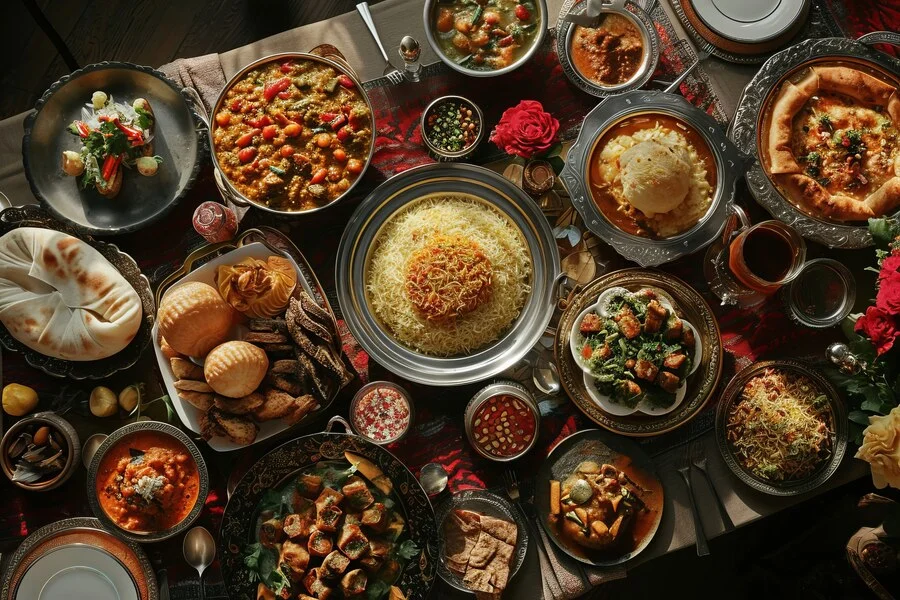Fusion cuisine is taking the culinary world by storm. With the blending of Eastern and Western flavors, chefs are breaking traditional boundaries to create dishes that are not only delicious but also unique. This cross-cultural mixing of flavors, ingredients, and cooking techniques is giving rise to some of the most innovative and mouth-watering creations we’ve seen in years. Let’s explore how fusion cuisine is reshaping our palates and bringing cultures closer through food.
The Rise of Fusion Cuisine: A Culinary Trend
Fusion cuisine isn’t new, but its popularity has surged in recent years. Globalization and cultural exchange have played a major role, allowing ingredients and cooking techniques to cross borders more freely than ever before. Dishes that blend Eastern and Western influences reflect the world’s interconnected nature and cater to a growing curiosity for diverse flavors.
People are eager to experience new tastes, and fusion cuisine offers just that. From food trucks to fine dining, you can find fusion-inspired menus almost everywhere. Diners crave experiences that combine familiar tastes with something new, creating a balance between comfort and adventure.
Influences of Eastern Flavors in Fusion Cuisine
Eastern flavors bring a unique range of ingredients and spices to the fusion scene. Asian ingredients like soy sauce, miso, ginger, and sesame oil add depth and richness to Western dishes. For instance, classic American burgers can get an Asian twist with ingredients like wasabi mayo, kimchi, or hoisin sauce. These elements enhance traditional dishes by bringing in umami flavors, which many Western ingredients may lack.
Spices like curry powder, turmeric, and cardamom add warmth and complexity to stews, pastas, and even salads. By combining Eastern ingredients with Western staples, chefs can add layers of taste that appeal to a broader audience.
Western Ingredients and Techniques in Fusion Dishes
Western cuisine has also influenced fusion dishes by contributing popular ingredients like cheese, cream, and various herbs. Italian, French, and American cooking techniques such as grilling, baking, and braising have also found their way into Asian fusion dishes. Think sushi burritos, where Japanese sushi meets the American concept of a burrito wrap, or ramen burgers, a mix of American-style burgers with ramen noodles as buns.
Cheese, in particular, has become a beloved ingredient in fusion cuisine. Mozzarella-topped sushi or cheesy dumplings combine Western comfort with Eastern textures. By blending these elements, chefs achieve familiar flavors with fresh presentations.
Popular Fusion Dishes from East to West
Some fusion dishes have become so popular that they’re now part of mainstream dining. Here are a few fan favorites:
Sushi Burritos
This dish merges the flavors of sushi with the format of a burrito, combining rice, fish, and vegetables in a handheld wrap.
Korean Tacos
A popular fusion of Korean BBQ and Mexican tacos, filled with ingredients like bulgogi, kimchi, and spicy mayo.
Ramen Burgers
The buns are made of ramen noodles, encasing a beef patty with Japanese flavors like soy sauce and miso.
Pizza with Tandoori Chicken
Traditional Italian pizza is topped with Indian-spiced chicken, giving a spicy kick to a well-loved classic.
These dishes not only satisfy cravings but also bring a bit of cultural exploration to the table.
Cultural Impact and Reception of Fusion Cuisine
Fusion cuisine is more than just a trend—it’s a reflection of cultural exchange. People from diverse backgrounds are coming together to appreciate and celebrate each other’s cuisines. This culinary blending encourages understanding and respect, bridging cultural gaps through food.
However, fusion cuisine can be a sensitive subject. For some, it may feel like an appropriation of traditional foods. But when done with respect, it can be a celebration of diversity. Successful fusion cuisine honors the origins of each dish, blending elements without compromising authenticity.
Challenges and Criticisms of Fusion Cuisine
While fusion cuisine is widely popular, it’s not without its challenges. Some critics argue that fusion dilutes traditional flavors and undermines cultural authenticity. Dishes that don’t respect the origins of certain ingredients or preparation methods can be seen as disrespectful.
Another challenge is achieving balance. Fusion dishes can easily become overly complex or confusing if too many flavors are mixed. The best fusion chefs find harmony, creating dishes that taste natural and complementary rather than forced.
Future of Fusion Cuisine: What’s Next?
As the world becomes even more connected, fusion cuisine will likely continue to evolve. New dishes and flavor combinations will emerge, blending flavors from unexpected places. For example, African and Latin American cuisines are starting to enter the fusion scene, introducing new spices and ingredients.
Chefs are experimenting with plant-based fusion as well, bringing vegan and vegetarian options to fusion menus. Fusion cuisine will remain dynamic and exciting, as culinary innovation knows no bounds.
Conclusion: The Global Appeal of Fusion Cuisine
Fusion cuisine has become a global phenomenon, reflecting the world’s love for diverse flavors and unique dining experiences. By blending Eastern and Western influences, chefs are crafting dishes that are as intriguing as they are delicious. As fusion cuisine continues to grow, we can look forward to an ever-evolving menu of creative and boundary-pushing dishes that celebrate the richness of culinary diversity. Whether you’re a foodie or a casual diner, fusion cuisine offers a taste of the world on your plate.


